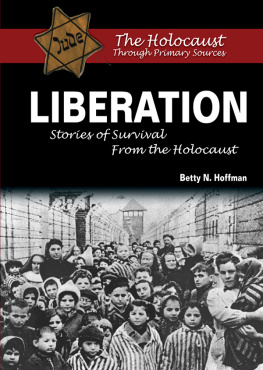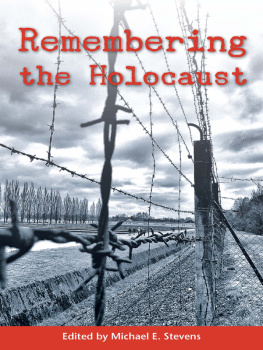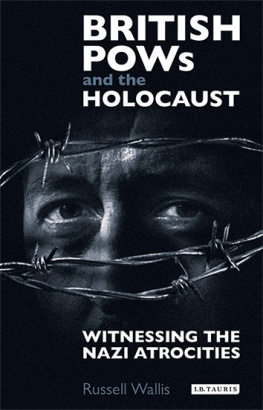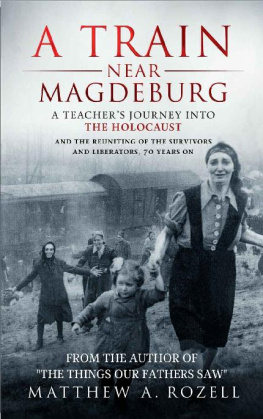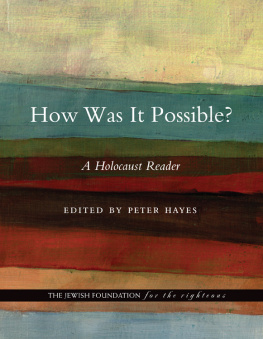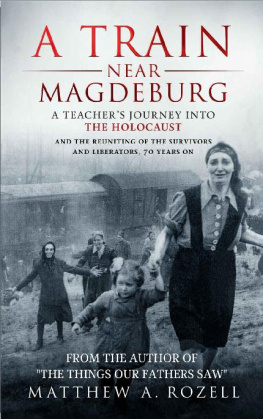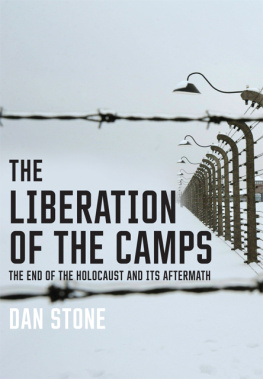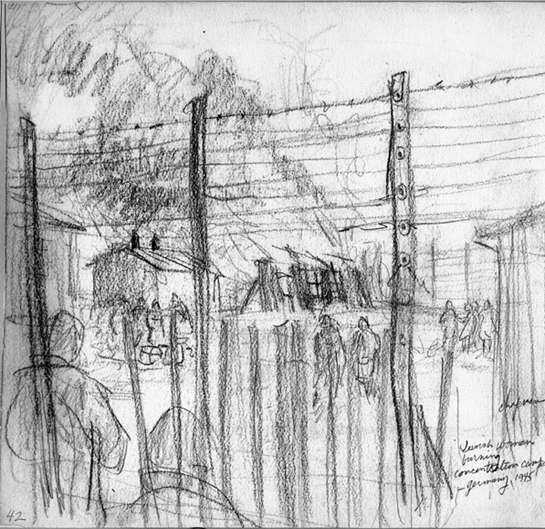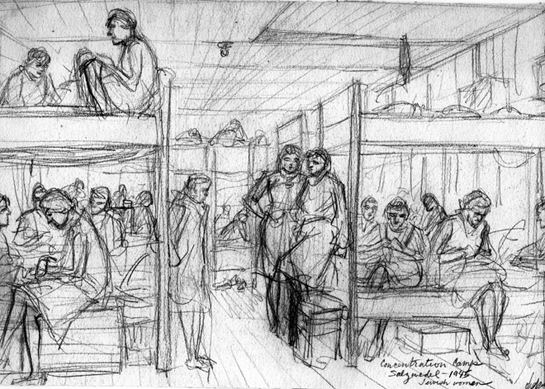What did we, camp prisoners, perceive of the moment? The SS suddenly left. We are locked inside the barracks. An airplane circles menacingly, close to the roof; hundreds of women crouch on barren floors and contemplate Imminent Death, who is no strangerand a few do hope and so they speak. Shots are heard sporadicallythe jailkeepers plane vanishes and then silence, long silence. Suddenly out of nowhere, it seemed, or out of another world, some mystical beings appear in shiny armor at the gate. All the prisoners able to move, cry and laugh, embrace each other and shoutAmericans! Americans! The gates, the doors open, Americans! We are free! The words are shouted in innumerable languages. It forms one unified choir: LIFE!
in the name of all of us who were freed, please accept the thanks for our last 37 years of life!
Mrs. Alice Kranzthor Fulop, age 81
Milwaukee, Wisconsin
April 22, 1982
INTRODUCTION

HOW DO YOU PREPARE TO SEE THAT?
I n the final months of World War II, as American soldiers pushed the German army east toward the advancing Russians, the GIs began to discoverand to liberatedozens upon dozens of camps large and small filled with the multitudes imprisoned by the Nazis. Some had been shipped to the camps to serve as slaves, to dig tunnels into mountains, there to build war machines for the Reich. Others had been shipped from camp to camp for one purpose only: to keep them from falling into the hands of the advancing Allied forces.
The prisoners who are the focus of this book had been liberated by the Americans, British, and Canadians. (The Russians liberated the notorious camps in Poland.) They had been consigned to death; the manner was, for all practical purposes, irrelevant.
They were marched to death, worked to death, starved to death, dehydrated to death, frozen to death, sickened to death, gassed to death, and sometimes shot to deathalthough this was not a preferred method, but only because bullets were not cost-effective. It also wasnt enough that the victims of the Nazis died; they were always humiliated and usually dehumanized and tormented before death came.
The deaths occurred not just in a handful of concentration camps whose names are familiar to almost everyone, but in literally thousands of camps and subcamps sprinkled all over the map of Germany, Austria, Czechoslovakia, and France. Wherever slaves could help the Third Reich accomplish its aims, there were camps. Some may have been nothing more than a barn where women workers making hand grenades in a forest armory were locked up at night; others were part of sophisticated underground manufacturing facilities where the first rockets and jet fighters were built and thousands of workers were used up.
Each of the major camps in Germany and Austrialike Dachau, Buchenwald, and Mauthausen, to name three of the oldest and largesthad jurisdiction over a wide geographical area, and each may have had a hundred or more subcamps. Workers were often transferred from one to the other as needed and then transported back to the main camp alive, to be killed, or dead, to be burned.
Its this system that American soldiers discovered, much to their shock, horror, and surprise, as they chased the German army toward its mythical Alpine redoubt. The GIs had received no warning as to what they might find, but that may not have mattered, for as one of them said to me, What if we had? How do you prepare to see that?
Most of the more than 150 Americans interviewed for this book were soldiers. Six were U.S. Army nurses. One was a 4F (physically unfit to be drafted) volunteer civilian ambulance driver who worked at Bergen-Belsen with the British and Canadian forces. Three were U.S. Army prisoners of wartwo of them Jewish soldierswho experienced the Holocaust firsthand alongside slave laborers imported from Eastern Europe. Five were concentration camp inmates who developed special relationships with particular GIs and are now American citizens. And onealso an American citizen nowserved in the Polish army attached to the Russian army. With them he discovered some of the worst of the camps in Poland but only after all the inmates had been either murdered or evacuated to the west. He finally liberated prisoners in Sachsenhausen and eventually participated in the battle for Berlin.
At the time they were interviewed, the veterans ranged in age from eighty-three to ninety-six. All are among the relative handful of Americas witnesses to the Holocaust who are still alive, still willing and able to recount their experiences, still cognizant of the need to tell their stories.
While researching this book, I discovered that its not unusual for veterans not to know, even now, the names of the camps they discovered. Some U.S. medical personnel spent weeks at the camps, but it was more typical for combat troops to spend mere minutes to a few hours inside the gates before moving on in their relentless pursuit of the German army. Although they may not know the names, and though they may have spent but a short time inside their gates, theyve never forgotten what the camps looked like, how they smelled, how the inmates looked, and how it all made them feel. And that is what this book is about. This is their opportunity, perhaps for a final time, to tell the world what they saw.
Writing about the trial of Adolf Eichmann in Jerusalem in 1963, Hannah Arendt used the phrase the banality of evil to explain that the Holocaust had been executed by ordinary people willing to be convinced that their actions were normal. In interviewing American soldiers who confronted that evil face-to-face, I became aware of a banality of the language they use to describe what they saw. And through my own personal reaction Ive come to recognize the danger in that for those of us who are anxious to learn from them. The most vivid example: soldier after soldier from camp to camp to camp described bodies stacked like cordwood, to the point that its very easy for the shock and horror of such a statement to evaporate into meaninglessness. When an individual soldier was confronted by bodies stacked like cordwood, he was seeing them that way, in all their brutal horror, through eighteen-or nineteen-, or twenty-year-old eyes, for the first time. Those kids were confronted with premeditated murders and attempted murders on a scale heretofore unimaginable.


